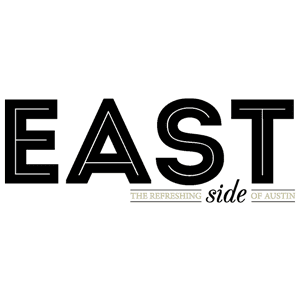Art Meets Tech {dadaLab}



In a city of stages, dadaLab offers something different.
Words Janine Stankus | Photos Baptiste Despois
You’re in a dark room, but the artist on stage is a near-shadow, backlit by scintillating shapes and shifting images that completely envelop the room. Sound emanates from four sculptural speakers in each corner, like huge futuristic phonographs set on platforms of dancing lights. Driving beats, glitchy synths, and long, wavering tones layer and enfold. You’re not just at the show; you’re in it.
This quadraphonic showcase is just a sample of the immersive experiences dadaLab brings to Austin. Founders Barna Kantor and Kyle Evans developed the organization as an evolution of their educational program, dadaGeek, and their arts-based non-profit, RollingRyot.
Both with backgrounds in fine arts and academia, the duo wanted to bring more technology-based art to the local community. So they started by offering classes in things like creative coding, electronic music production, and audio-reactive visuals. As their need for space grew, they founded dadaLab, not just as a performance venue but also a collective creating larger-scale, immersive artworks and events.
For Barna, the exploration of spatial sound has always been a driving force. “There are certain sounds in our environment that are vector, or that just swish by, or trot by, or walk by,” he explains. “Those sounds can be separated and become raw materials for compositions.”
This interest has manifested in projects ranging from quadraphonic performances to a spiraling, 32-channel installation inside a parking garage. One of dadaLab’s recent projects, Ghost Line X, brought artists from around the globe to create compositions to activate a 15-speaker sound and lighting setup spanning 300 feet of Waterloo Park.
Kyle notes, “Academia has been exploring this idea of spatial audio for a long time. But they’re in these very specific systems…and only a small number of people can access them. We’re interested in blowing that up.” As a professor and an artist whose own work is also steeped in experimental music and glitch aesthetics, Kyle sees dadaLab as an opportunity to make the erudite more accessible. “I think there is a middle ground in retaining the depth that we learned to put into our artwork and still making sure that it’s something a broader audience can enjoy,” he adds.
Cultivating Talent
For their first edition of Ghost Line X, Kyle and Barna had difficulty finding artists with the existing tech chops to create work for their fifteen-channel system. So they decided to hold workshops to teach artists how to do it. One of the composers, Chill, developed work out of that workshop that was chosen for the second installation of Ghost Line X.

Both now with young daughters, the founders are also focused on creating experiences that can be enjoyed by kids—and, increasingly, young adults. Kyle points to a phenomenon among his UT students, whose high school experiences during the pandemic were shaped by mostly virtual interactions. Because that season shaped their interactions, that demographic can be difficult to draw out.
That’s why dadaLab emphasizes the convergence of not just audio and visuals but also unique spaces, modular structures, and performance. They’re out to create hyper-engaging experiences that somehow capture the “magic” of virtual worlds and translate it into the physical.
“The nature of art is changing rapidly,” notes Barna. “It’s on us now to see how academic education transforms into new, far more mainstream, accessible forms, and how we inject art into these forms.”
Whether through intimate performances, public installations, or full-on festivals, dadaLab is committed to finding new, creative ways to merge art and tech to build truly immersive experiences.
InTRUSSting material
One component that has been a game-changer for dadaLab is a material called ModTruss. It’s a modular, erector-set-looking trussing system that filters light and can be assembled into almost any configuration. “We can think and imagine any type of design,” says Kyle, “and then we can build it on a large architectural scale.”
Contact:
2008 Alexander Ave.
dadalab.art
@dadaLab.io


